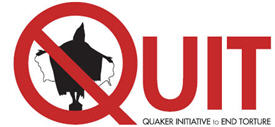There continue to be movements on the legal front internationally regarding American torture. Here's news from Poland.
Guest Post: Polish Journalist Discusses the Ongoing Investigation into the CIA’s Torture Prison in Poland
17.4.12
http://www.andyworthington.co.uk/2012/04/17/guest-post-polish-journalist-discusses-the-ongoing-investigation-into-the-cias-torture-prison-in-poland/
Since November 2005, when the Washington Post first reported that the CIA had held “high-value detainees” in its “war on terror” in secret prisons in eastern Europe, and Human Rights Watch then revealed that prisons were located in Poland and Romania, concerned politicians and organizations have worked hard to expose the truth about these prisons (and another that was later discovered in Lithuania).
No one in a position of authority in these countries admitted that these prisons had existed, but important work confirming their existence was done within the EU and the Council of Europe, and of great significance, in June 2006 and June 2007, were two Council of Europe reports (2007 PDF), and a European Parliament report, in January 2007 (PDF). In the 2007 CoE report, Swiss Senator Dick Marty concluded that, after two years’ research and interviews with over 30 current and former members of the intelligence services in the United States and Europe, stated that he had enough “evidence to state that secret detention facilities run by the CIA did exist in Europe from 2003 to 2005, in particular in Poland and Romania.” Marty also identified both sites, and explained how the flights were disguised using fake flight plans.
One of the MEPs who worked on the EU investigation was Józef Pinior, a former member of the Solidarity movement, who was an MEP from 2004 to 2009, and was first a member, and then the Vice-Chair of the Subcommittee of Human Rights. Pinior has always claimed that, during his investigations, he was told about a document signed by Leszek Miller, Poland’s Prime Minister at the time the CIA prison was in operation, providing information regulating the operations of the prison – in a military intelligence training base in Stare Kiejkuty in north eastern Poland – including information about how, if necessary, to deal with corpses inside the facility.
Although Pinior never saw the document, he has stated that it came from a trustworthy source, although he has refused to name that source. As WL Central noted in an article mentioning Pinior in June 2011, “Asked whether this was a source from within Polish intelligence services, he refused to comment. He added that with 30 years experience in politics, he was fully aware of the implications of such a statement,” although he pointed out that, during his work on the investigation, he spoke to members of the Polish Secret Service, who “were uneasy about the fact that their facility was used for purposes which were not in their interest.”
The WL Central article also noted that Pinior described the document as being “brief, outlining logistics, and being addressed to the Polish Secret Service, wh[ich] operates the base in Stare Kiejkuty,” and also stated that “Zbigniew Wassermann and Zbigniew Ziobro, who were part of the PiS government succeeding Miller, saw and discussed this document along with four other officials, and that there are minutes of this meeting.”
Within Poland, Pinior was ridiculed for his statements at the time, although, as the years have passed, it has become increasingly obvious that his detractors were desperate to hide their knowledge of, or involvement in a project as shameful as the torture prison that they allowed the CIA to operate on Polish soil, and sensible people now recognize the importance of the stand that he took.
As I noted in an article in August 2010, it was not until September 2008 that a Polish intelligence official confirmed that the CIA had held terror suspects at the base in Stare Kiejkuty, and it took until March 2009 for the Polish Air Navigation Service Agency to release information about a specific flight to the site. Further incriminating information emerged in September 2009 and June 2010, and in August 2010 the Polish Border Guard Office provided even more significant information.
As a result of these disclosures, a Polish prosecutor began “investigating the possible abuse of power by Polish public officials with regard to a CIA black site” in 2008, although, as I noted in an article two weeks ago, “[T]he investigation only became widely noted in September 2010, when lawyers working with the Open Society Justice Initiative ‘filed an application demanding that the Appellate Prosecutor in Warsaw investigate and prosecute the people responsible for Guantánamo prisoner Abd al-Rahim al-Nashiri’s transfer, detention, and torture on Polish soil.’” Al-Nashiri was a “high-value detainee,” who was held and tortured in Thailand prior to his arrival in Poland. Al-Nashiri was granted victim status in October 2010, and of particular importance to his case was Mikołaj Pietrzak, representing al-Nashiri in the proceedings in Poland, who worked tirelessly to raise his client’s profile.
Subscribe to:
Post Comments (Atom)

No comments:
Post a Comment
Note: Only a member of this blog may post a comment.